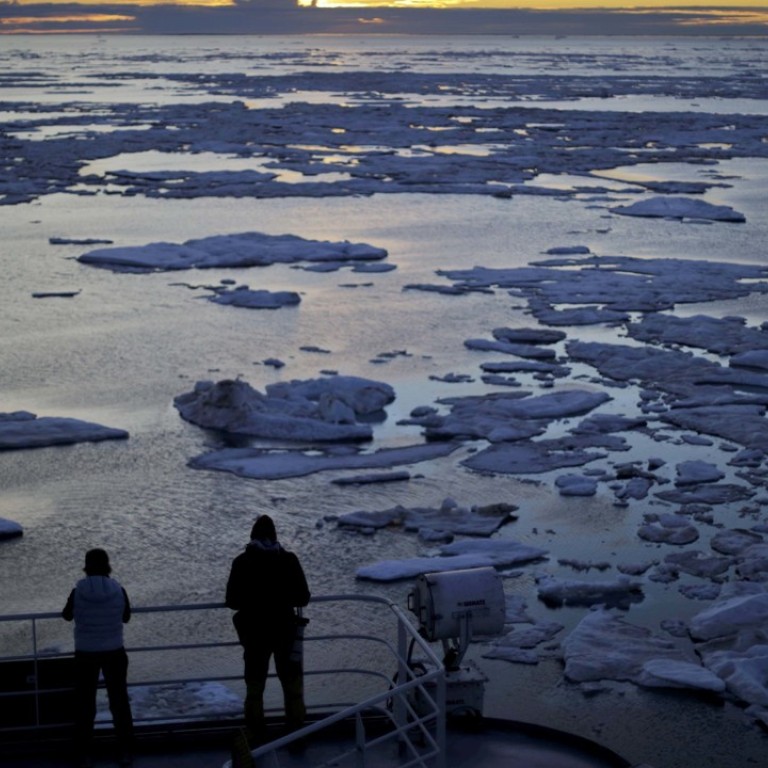
Commercial fishing banned across much of Arctic
International agreement will protect vast areas of sea that have opened up as the ice melts
Commercial fishing will be banned across much of the Arctic under a new agreement signed on Wednesday in Greenland, closing down access to a vast area of sea that is newly opening up under climate change.
The moratorium on Arctic fishing will safeguard an area about the size of the Mediterranean for at least the next 16 years, as warming temperatures allow summer navigation across what was previously ice.
Sea ice in the Arctic reached its annual minimum last week, with what polar scientists confirmed was the joint sixth-lowest extent of ice on record.
This year sits with 2008 and 2010 in the rankings of ice minimums, showing a clear trend of diminishing summer ice cover and thickness, with record lows in the last decade and reports of thick multi-year ice showing new vulnerability to break-up.
No fishing takes place there currently, but large ships are starting to explore the area.
Maersk, the Danish shipping company, in August sent the first container vessel through the previously frozen route, starting from the Russian city of Vladivostok and arriving safely with its cargo of frozen fish in St Petersburg after a 37-day voyage.
The Arctic is likely to become more attractive to commercial fishing fleets in future years, as climate change is causing major fish stocks including cod and halibut to move further north as lower latitudes warm, and overfishing in traditional grounds makes potential new areas appealing.
China and Russia want to develop Arctic energy resources together, and US disapproval may not deter them
Nine nations – the US, Russia, Canada, Norway, Denmark, Iceland, Japan, South Korea and China – plus the EU signed the Central Arctic Ocean agreement at a ceremony in Greenland, following several years of talks.
The countries will also begin a joint programme for scientific monitoring of the 2.8 million sq km, and the moratorium can be extended in five-year increments dependent on the results.
David Balton, former US ambassador for oceans and fisheries, who helped negotiate the pact, said the agreement would change international oversight of the Arctic and help people living there.
“There has been a lot of work in the last decade to try to strengthen various regimes of governance and to improve international cooperation about the Arctic,” he told the Pew Charitable Trusts NGO.
“Is there more that we need to do to improve Arctic governance? That will be a key question.”
China breaks the Arctic ice with launch of new research vessel Snow Dragon II
Steve Ganey, senior director for land and oceans programmes at Pew, said: “As new open waters emerge at the top of the world, international leaders have agreed that it would be risky and unwise to allow commercial fisheries to operate in the Arctic before scientists have established a baseline for monitoring the health of the region’s marine ecosystem. By using science-based measures to guide decision-making, the agreement will go a long way toward conserving this unique environment.”
The prospect of oil drilling in the Arctic has alarmed campaigners in recent years.
Current governance of the Arctic is not well set out in international law, since until recently it was largely academic.
The new moratorium is one of the first steps to bring legal protection to the area’s fragile environment.
For those countries with land borders in the Arctic Circle, and therefore stakes in its undersea resources, one hope behind the agreement will be to cement their claim to any natural resources that one day open up.
However, the effect of the ban is likely to be, not only preventing the exploitation of fish stocks, but also the pollution and damage that would accompany vessels.

